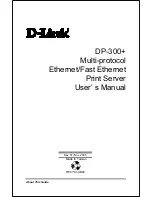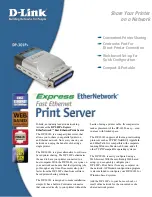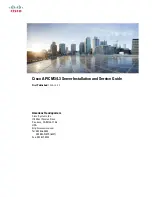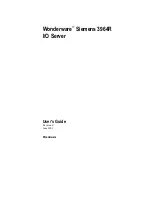
The
following
cables
are
provided:
v
Power
cables:
Four-wire
power
cables
connect
the
drives
to
the
power
supply.
At
the
end
of
these
cables
are
plastic
connectors
that
can
be
attached
to
different
drives;
these
connectors
vary
in
size.
Use
either
a
four-wire
power
cable
or
Serial
ATA
power
cable
with
Serial
ATA
drives,
but
do
not
use
both
at
the
same
time
(use
one
or
the
other).
For
SCSI
hot-swap
drives,
a
special
power
cable
connects
the
SCSI
backplane
to
the
power
supply.
v
Signal
cables:
Signal
cables
are
typically
flat
cables,
also
called
ribbon
cables,
that
connect
parallel
IDE,
Serial
ATA,
SCSI,
and
diskette
drives
to
the
system
board.
Two
or
three
types
of
signal
cables
come
with
the
server:
–
IDE:
The
wider
IDE
signal
cable
has
three
connectors.
One
of
these
connectors
is
attached
to
the
drive,
one
is
a
spare,
and
the
third
is
attached
to
the
primary
IDE
connector
on
the
system
board.
The
spare
connector
can
be
used
to
connect
an
additional
IDE
drive
to
the
server.
The
CD-ROM
drive
is
attached
to
an
ATA
100
signal
cable.
ATA
100
signal
cables
are
color-coded.
The
blue
connector
is
attached
to
the
system
board.
The
black
connector
is
attached
to
the
master
IDE
device.
The
gray
middle
connector
is
attached
to
the
subordinate
IDE
device.
–
Diskette
drive:
The
narrower
signal
cable
has
two
connectors.
One
is
attached
to
the
diskette
drive,
and
the
other
is
connected
to
the
connector
(FDD1)
on
the
system
board.
–
Serial
ATA
(SATA):
The
narrower,
black
signal
cable
has
two
connectors.
One
is
connected
to
a
simple-swap
Serial
ATA
drive,
and
the
other
is
attached
to
the
connector
on
the
system
board.
Each
simple-swap
Serial
ATA
drive
comes
with
a
cable.
If
you
install
an
additional
simple-swap
Serial
ATA
drive,
you
will
need
an
additional
cable.
If
you
install
the
optional
ServeRAID-7t
S-ATA
controller
to
add
a
third
and
fourth
SATA
drive,
all
four
SATA
drives
must
then
be
connected
to
the
ServeRAID-7t
S-ATA
controller
instead
of
the
system
board.
The
optional
ServeRAID-7t
S-ATA
controller
comes
with
two
cables
that
you
can
use
to
cable
the
third
and
fourth
SATA
drives.
See
the
optional
ServeRAID-7t
S-ATA
controller
documentation
for
cabling
instructions.
–
SCSI:
A
round
SCSI
cable
connects
the
SCSI
backplane
to
the
SCSI
channel
B
connector
on
the
system
board.
The
maximum
cable
length
that
supports
Ultra320
SCSI
hard
disk
drives
is
61
cm
(24
in.).
Installing
an
external
SCSI
connector
To
install
an
external
SCSI
connector
on
the
rear
of
the
computer,
install
an
external
SCSI
interface
option.
For
a
list
of
supported
external
SCSI
interface
options
for
your
computer,
go
to
http://www.ibm.com/pc/compat/.
The
external
SCSI
interface
option
contains
a
SCSI
cable
with
a
connector
at
one
end
and
another
connector
on
the
other
end.
Complete
the
following
steps
to
install
and
route
the
SCSI
cable
in
the
computer:
1.
Turn
off
the
computer
and
all
peripheral
devices.
Disconnect
all
power
cords;
then,
disconnect
all
external
signal
cables
from
the
computer.
2.
Remove
the
computer
cover
(see
“Removing
the
side
cover”
on
page
10).
3.
Remove
the
support
bracket
(see
“Removing
and
installing
the
support
bracket”
on
page
12).
24
xSeries
226
Type
8648:
Option
Installation
Guide
Summary of Contents for eServer xSeries 226Type 8648
Page 1: ...xSeries 226 Type 8648 Option Installation Guide ERserver...
Page 2: ......
Page 3: ...xSeries 226 Type 8648 Option Installation Guide ERserver...
Page 56: ...44 xSeries 226 Type 8648 Option Installation Guide...
Page 62: ...50 xSeries 226 Type 8648 Option Installation Guide...
Page 70: ...58 xSeries 226 Type 8648 Option Installation Guide...
Page 74: ...62 xSeries 226 Type 8648 Option Installation Guide...
Page 75: ......
Page 76: ...Part Number 88P8978 Printed in USA 1P P N 88P8978...
















































